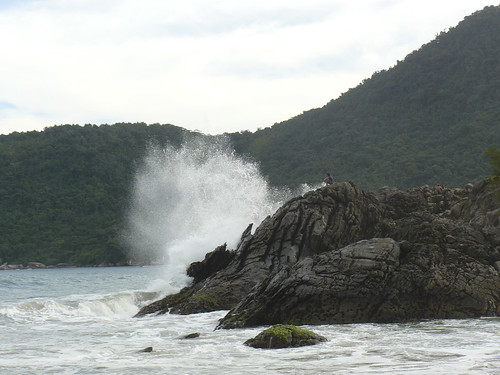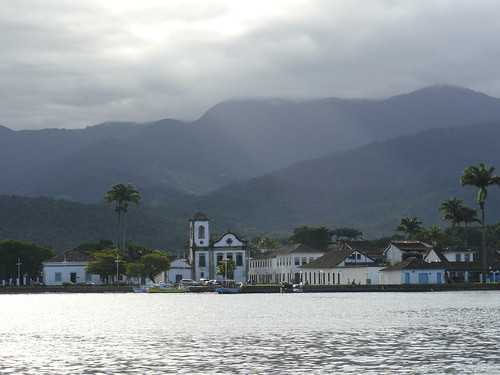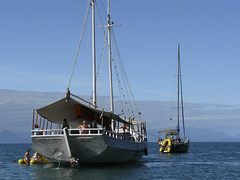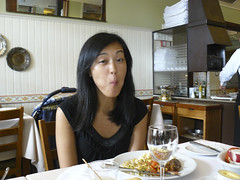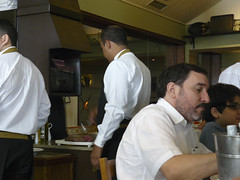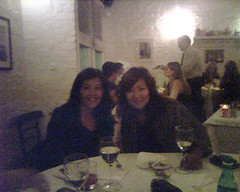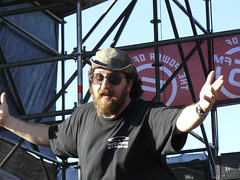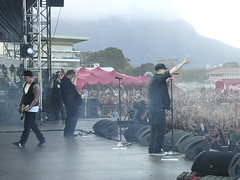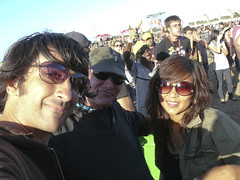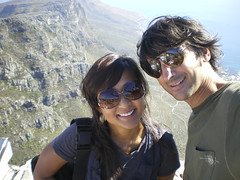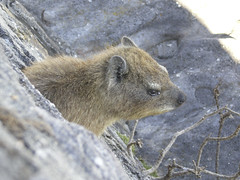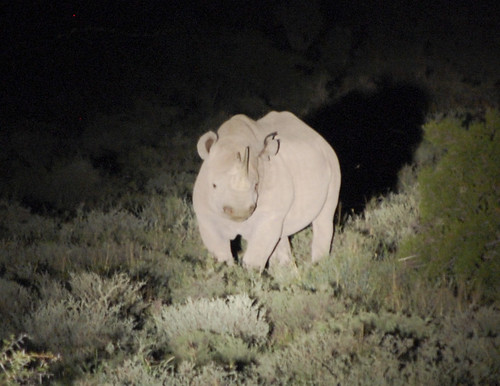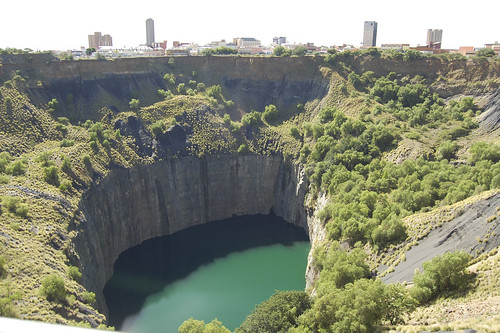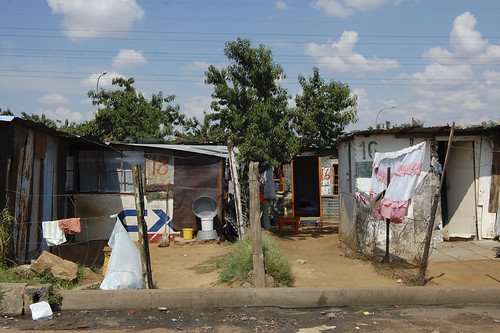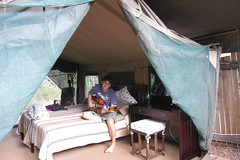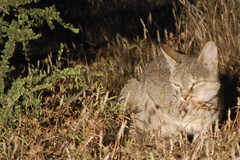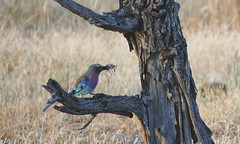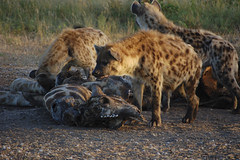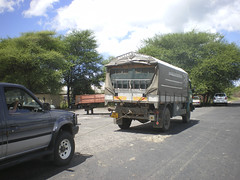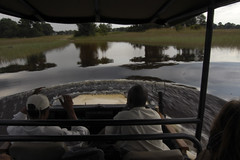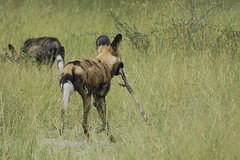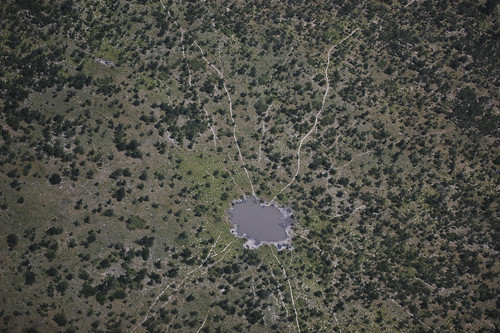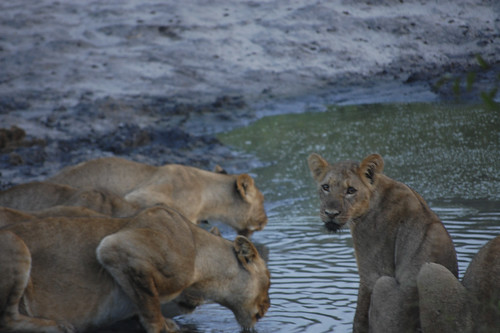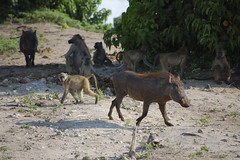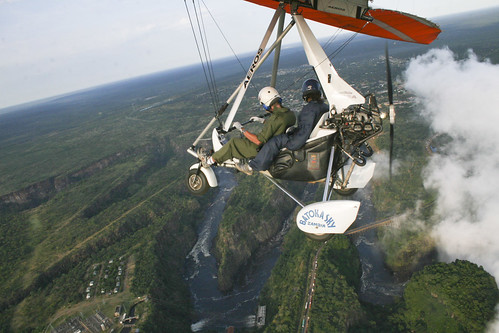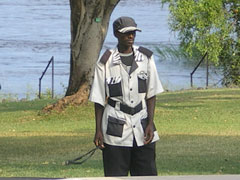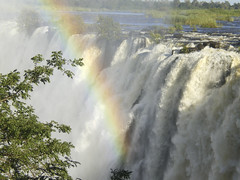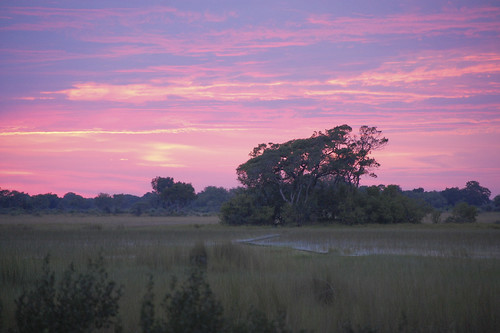
First of all, don’t waste your time doing a self-drive safari unless you have a good idea of where to go and when. Mike and I spent 3 days at Kruger, and only saw lots of animals when we were with a guide. The guides also keep in radio contact with each other, so if something interesting is happening they will be alerted about it. Not to mention its just more fun to have someone drive you around, and give you animal trivia you’ll probably never use.
Typically a safari lodge will have two game drives per day. The first one usually means you have to wake up insanely early, even though its supposed to be a “vacation”. At Kruger NP the game drives depart at 3:45am. But in the Okavanga Delta, our wake up call was at 5:30am–I guess the animals “sleep in” in Botswana compared to their South African counterparts.
Anyways at 5:30, the sun is just breaking and beginning to warm up the day. Amazingly, the temperature is nice and cool in the morning (about 60′), but by mid-morning it can be pretty hot and steamy. The early morning is my favorite because the light from the sun seems to be hitting everything just right–the trees have a nice warm tone, you can see the dew on the tall grass, it isn’t raging hot yet, and the birds are singing in the morning.
After a quick breakfast, we head out in the Land Cruiser where the fresh air and smells of Africa hit you full in the face–the mustiness of grass, the sweetness of wild sage, and the smell of animals (and their dung). As you drive, there are pockets of warm air, mixed with cool breezes. It’s really something else. The time passes quickly even though the game drives can run from 2.5 hours- 4 hours. If you are on a safari at a national park, the vehicle will stay on the tar and dirt roads, which limits your access to the animals– you will only see the animals up close when they are near the road. On the other hand, if you are on a game reserve or a private concession the guides will likely drive off the road in order to track the animals, which makes for a much more exciting time.
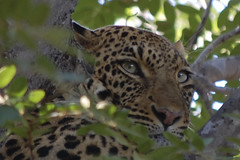 Once you return from the morning game drive, there’s usually brunch followed by a few hours to rest (or hang out by the pool) before the evening game drive which begins around 4:30pm. There have been game drives where we’ve seen very little in 3 hours, maybe impala or zebra. And on the other hand, there are times where it’s just one exciting find after another. Like our last morning in the Okavango Delta, we were going on a short game drive before catching our flight. We weren’t expecting to see much, but we ended up finally seing a leopard. I thought we were tracking a lion, until I realized our guide was looking up in a tree. We sat with the leopard for 1.5hours, just hoping she would come down from the tree.
Once you return from the morning game drive, there’s usually brunch followed by a few hours to rest (or hang out by the pool) before the evening game drive which begins around 4:30pm. There have been game drives where we’ve seen very little in 3 hours, maybe impala or zebra. And on the other hand, there are times where it’s just one exciting find after another. Like our last morning in the Okavango Delta, we were going on a short game drive before catching our flight. We weren’t expecting to see much, but we ended up finally seing a leopard. I thought we were tracking a lion, until I realized our guide was looking up in a tree. We sat with the leopard for 1.5hours, just hoping she would come down from the tree.
**note: the only thing that can make a game drive long and tiring, is if you have a group of bird lovers in the car with you. Stopping for every bird, discussing their coloring (usually brown with white), where they migrate, what they eat. Most of the time the bird is so far out in the distance that I can barely even see anything…
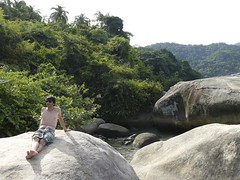 Today we took a 20 minute mini bus ride from Paraty this morning to Trindade. From Trindade, it was supposed to be a 30 minute hike through Praia do Meio to Caxiadoce. Sounded easy enough from the start…but whenever Mike and I go on a hike, it’s never a direct route. We seem to always get lost. The half an hour that it takes everyone else, always takes us much longer…today it took us two hours.
Today we took a 20 minute mini bus ride from Paraty this morning to Trindade. From Trindade, it was supposed to be a 30 minute hike through Praia do Meio to Caxiadoce. Sounded easy enough from the start…but whenever Mike and I go on a hike, it’s never a direct route. We seem to always get lost. The half an hour that it takes everyone else, always takes us much longer…today it took us two hours.